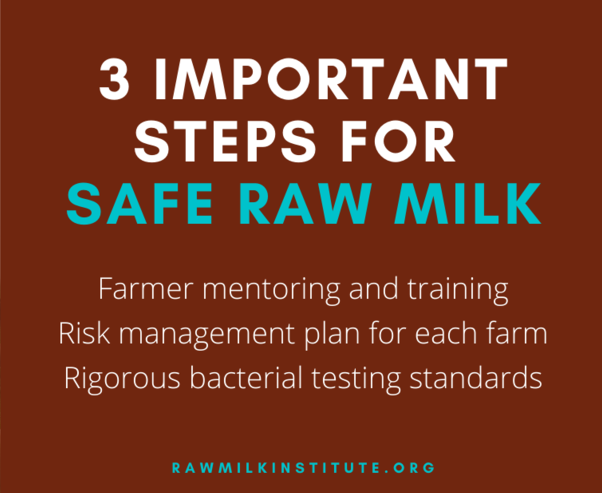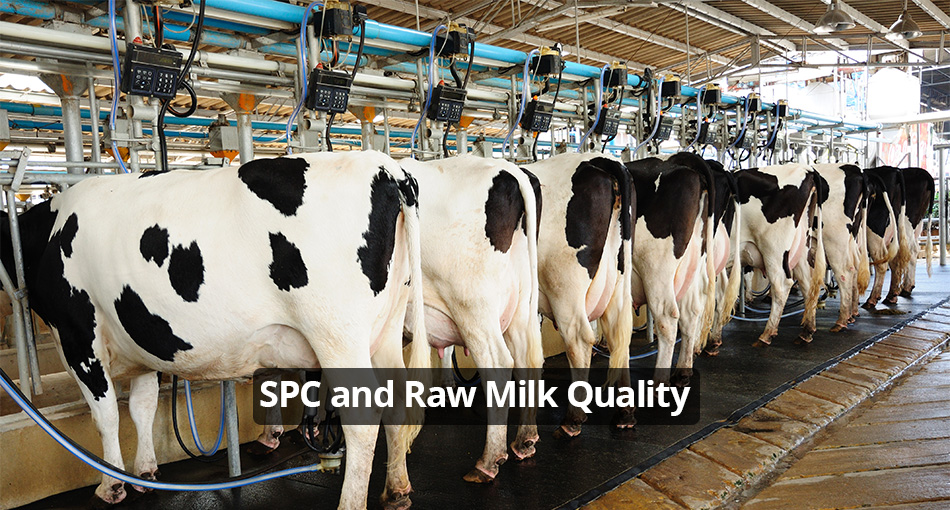Standard Plate Count of Milk: Effects on Quality
Standard Plate Count (SPC) directly impacts the quality of raw milk. The quality of the raw milk supply begins on the dairy farm and ends when the product is consumed by consumers. Maintaining the highest quality throughout this chain requires close monitoring and numerous regulations and quality standards for Grade “A” raw milk.
SPC measures the overall bacterial quality of raw milk and is used extensively in both regulatory and payment testing programs. This post takes a close look at SPC, how it is measured, what the numbers mean, and the importance of accuracy in sampling.
Regulatory testing for raw milk quality
Regulatory testing of raw milk requires that SPC not exceed 100,000 colony forming units per milliliter. Raw milk must also meet other quality standards, including additional bacteriological tests to identify potential problems that may not be evident or detected with the SPC alone.
Another helpful test is the Preliminary Incubation (PI) count for raw milk. The PI test can detect inadequate hygiene practices on the dairy farm, which the SPC procedure may miss. (See our previous post, Using Preliminary Incubation Count for Measuring Raw Milk Quality).
The RAWMI (Raw Milk Institute) Common Standards describe a three-pronged approach for the production of safe raw milk which consists of:
- Farmer training and mentoring
- Risk Analysis and Management Plan (RAMP) for the unique conditions on each individual farm
- Stringent yet achievable bacterial test standards for coliforms and Standard Plate Count (SPC)

Image source: The Raw Milk Institute
SPC Test for Milk: Understanding the Numbers
The SPC of raw milk samples indicates the total number of aerobic bacteria present in the milk at the time of pickup. Milk samples are plated in a semi-solid nutrient medium and then incubated for 48 hours at 32°C (90°F). Single bacteria or tight clusters grow to become visible colonies that are then counted.
Raw milk samples that have been aseptically collected from clean, healthy cows generally have SPC values of less than 1,000. Higher counts suggest that contaminating bacteria are entering the milk from various possible sources.
While it’s impossible to eliminate all sources of contamination, counts of less than 5,000 or even 1,000 are possible; counts of 10,000 or less should be achievable by most dairy farms. In addition, most people in the dairy industry feel that more rigorous standards would result in an even higher quality milk supply.
What causes elevated SPC?
One of the most common causes of high SPCs is poor milking system cleaning. Milk residues on equipment surfaces provide nutrients for the growth and multiplication of bacteria.
Other practices that might contribute to increased bulk tank SPCs are milking soiled cows, maintaining an unclean milking and housing environment, and failing to rapidly cool the milk to or maintaining it at less than 4.4°C (40°F). On rare occasions, cows with mastitis can shed infectious bacteria and also contribute to or cause high SPCs.

Source: Cornell University’s DairyFoods Science Notes. Science Notes. https://foodsafety.foodscience.cornell.edu/sites/foodsafety.foodscience.cornell.edu/files/shared/documents/CU-DFScience-Notes-Bacteria-Raw-Milk-Review-09-08.pdf
The importance of collecting representative milk samples for accuracy in SPC
The large volumes of bulk tanks and trucks make adequate agitation more difficult. Raw milk stratification means samples taken from the top of a bulk tank or truck are not representative and may not accurately reflect the SPC of the entire load. Sampling the full column of milk from top to bottom with the QualiTru Sampling Systems’ (previously QMI®) Aseptic Sampler, which utilizes a peristaltic pump, provides a representative sample for analysis. Test results from these samples offer a higher level of confidence.
It is essential to understand the difference between a Grab sample and a Representative sample.
Antone Mickelson, Quality and Field Manager for Northwest Dairy Association, said…,
“The QMI® Aseptic Sampler has drastically reduced the number of sporadic high bacteria counts of farm samples.”
Source: https://qualitru.com/wp-content/uploads/fallnewsletter09rev20091014.pdf
Here at QualiTru, we strongly believe in the saying, “Your test results are only as accurate as your sample.” Those are not just words to us; they are in our DNA and what drives us to do our best to meet the challenges faced by dairy farmers every day.
According to the Pasteurized Milk Ordinance (PMO), “It shall be the responsibility of the bulk milk hauler/sampler to collect a representative sample of milk from each bulk milk tank and/or silo or from a properly installed and operated in-line sampler or aseptic sampler, that is approved for use by the NCIMS Conference, State Regulatory Agency and FDA to collect representative samples, prior to transferring milk utilizing an aseptic sampler from a farm milk tank and/or silo truck or other container.” See our Regulatory Approvals.
Explore more about about the key parameters for raw milk testing to achieve high quality products in our blog post, Raw Milk Testing for the 21st Century: Key Parameters for Achieving High Quality.
.




